CBAM heralds new journey for sustainable energy use
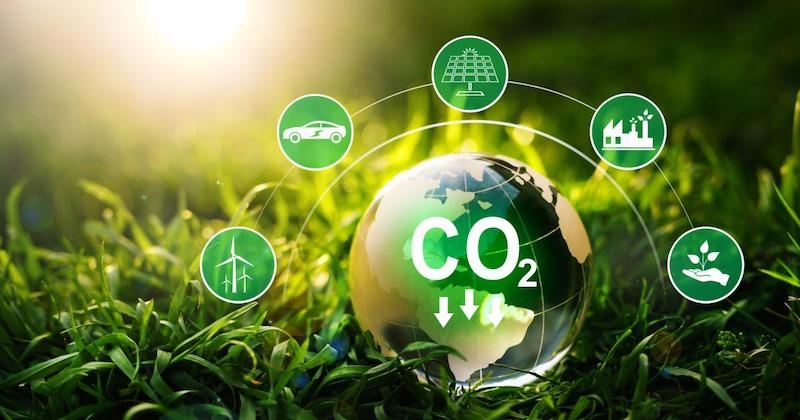 |
The EU official began implementing the transition period of the Carbon Border Adjustment Mechanism (CBAM) from October 1. As a result, iron and steel, cement, and fertiliser manufacturers in Vietnam are required to report total verified greenhouse gas (GHG) emissions embedded in goods exported to the EU.
At an event on green steel production at the end of September, Nghiem Xuan Da, chairman of the Vietnam Steel Association, said that the country is taking the first steps to build a carbon-neutral roadmap for the steel industry.
"Towards 2025, the steel industry aims to reduce GHG emissions by 10-30 per cent by optimising processes, energy, raw materials, and technology. In 2025-2030, the industry will use low-carbon materials and increase the amount of hydrogen gas in steel factories by 30 per cent," Da explained.
Despite the ambition to reduce GHG emissions, the CBAM will pose a major challenge for Vietnamese steel exporters, according to Da. In the first six months of 2023, Vietnam exported 1.36 million tonnes of steel to the EU, an increase of 1.5 times on-year.
In 2022, the export turnover of Vietnam's steel industry reached nearly $8 billion. The figure was much higher than the export turnover of $2 billion of a decade ago.
"Thanks to the strong investment, Vietnam became the world's 24th largest raw steel producer in 2015 with an output of 10 million tonnes. As a result, many factories recorded excess capacity and low profit margins. They didn't have enough capital to make investment and reduce emissions," Da said.
Steel manufacturers were the first to realise this issue. The shrinking demand, coupled with a steep decline in prices, makes the steel industry the biggest carbon emitter. Vietnamese officials have advocated the development of the industry to support the rapid development of the economy.
However, they must strive to create a more sustainable growth model, Da said, as exports are on a downward trend, despite being one of the key growth drivers.
Da does not think that similar things will happen again in the steel industry today. "However, the government's target of reducing energy consumption by 2030 can only be achieved when steel production does not use fossil fuels while reducing excess capacity and carbon emissions,” he said.
The application of CBAM in the EU can create opportunities for Vietnam to achieve sustainability in foreign trade. For 2023, the trade turnover between Vietnam and the EU is estimated to reach $80.1 billion, an on-year increase of 24 per cent. This figure was lower than the growth rate of 31 per cent in 2022.
Trade industry officials argue that the Vietnam-EU Free Trade Agreement is a counterweight to facilitate the recovery of Vietnam's exports. Businesses can also receive more benefits as Vietnam is one of four countries that have signed an agreement with the EU in Asia. They even believe that the EU's trade policy is focusing on these countries to remove difficulties caused by the decline in the domestic market due to the pandemic and high inflation.
Ma Khai Hien, director of the Energy Conservation Research and Development Centre said, "The biggest technical barrier is to report total verified GHG emissions embedded in goods imported into the EU. Many companies are facing challenges in the stage of classifying and calculating emission sources."
With the ISO:14060 method, direct emission sources, such as fuel burners, are easy to calculate because businesses can proactively collect data. However, calculating indirect emission sources is more challenging. For example, a steel mill must calculate emissions from input materials, but the data depends on the supplier, Hien added.
"A roadmap to gradually reduce emissions over the years can help businesses balance costs," Hien said. "Businesses should closely follow each criterion. Businesses also need support and training from the government to determine their own emissions. Moving forward, policymakers can come up with more sustainable solutions to reduce emissions in production, such as using photovoltaics or green hydrogen to replace fossil fuels."
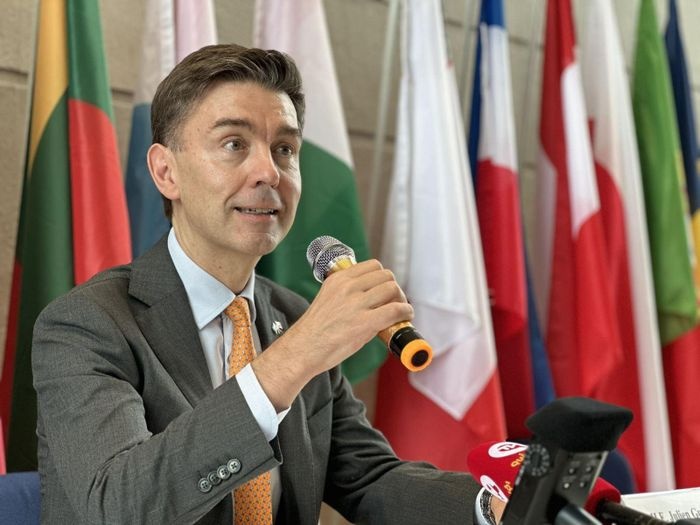 |
Julien Guerrier
Ambassador and head
EU Delegation to Vietnam
The EU has developed a strategy for the Indo-Pacific region in which Vietnam holds a critically important position in terms of economy, population, and geographical location. Vietnam is an important partner. The EU supports and is willing to share experience in the energy transition in Vietnam to achieve a net-zero target by 2050.
This support will be realised through the EU-Vietnam Free Trade Agreement as well as the innovative and creative research initiative Horizon Europe. The EU can also support Vietnam's energy transition with funding from the Just Energy Transition Partnership and help Vietnam build infrastructure without incurring public debt through a financing tool called Global Gateway, which is worth over €300 billion.
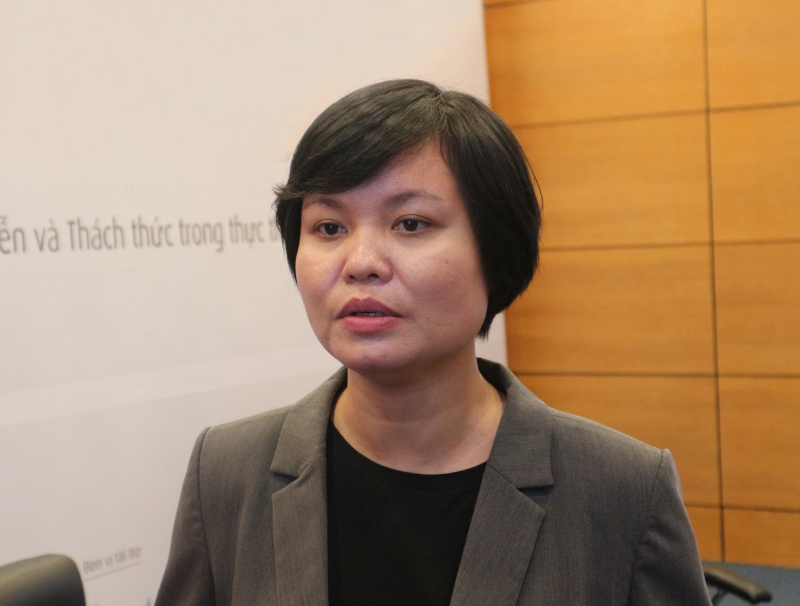 |
Dr. Nguyen Thi Thu Trang
Director, Centre for WTO and International Trade
Vietnam Chamber of Commerce and Industry
CBAM may have a large impact on the quantity and scope of Vietnam's goods exported to the EU, as this mechanism covers almost all of Vietnam's key products. These products are also the focus of the green transformation in the EU. Therefore, the implementation of the CBAM requirements presents a big challenge for Vietnamese businesses.
In Vietnam, an increasing number of industries are going green. Our survey recorded that nearly 80 per cent of businesses know about the EU's Deforestation Regulation. Nearly 60 per cent of textile and garment businesses know about the EU strategy for sustainable and circular textiles. This shows that Vietnamese manufacturers are gradually adapting to new regulations in import markets such as the EU.
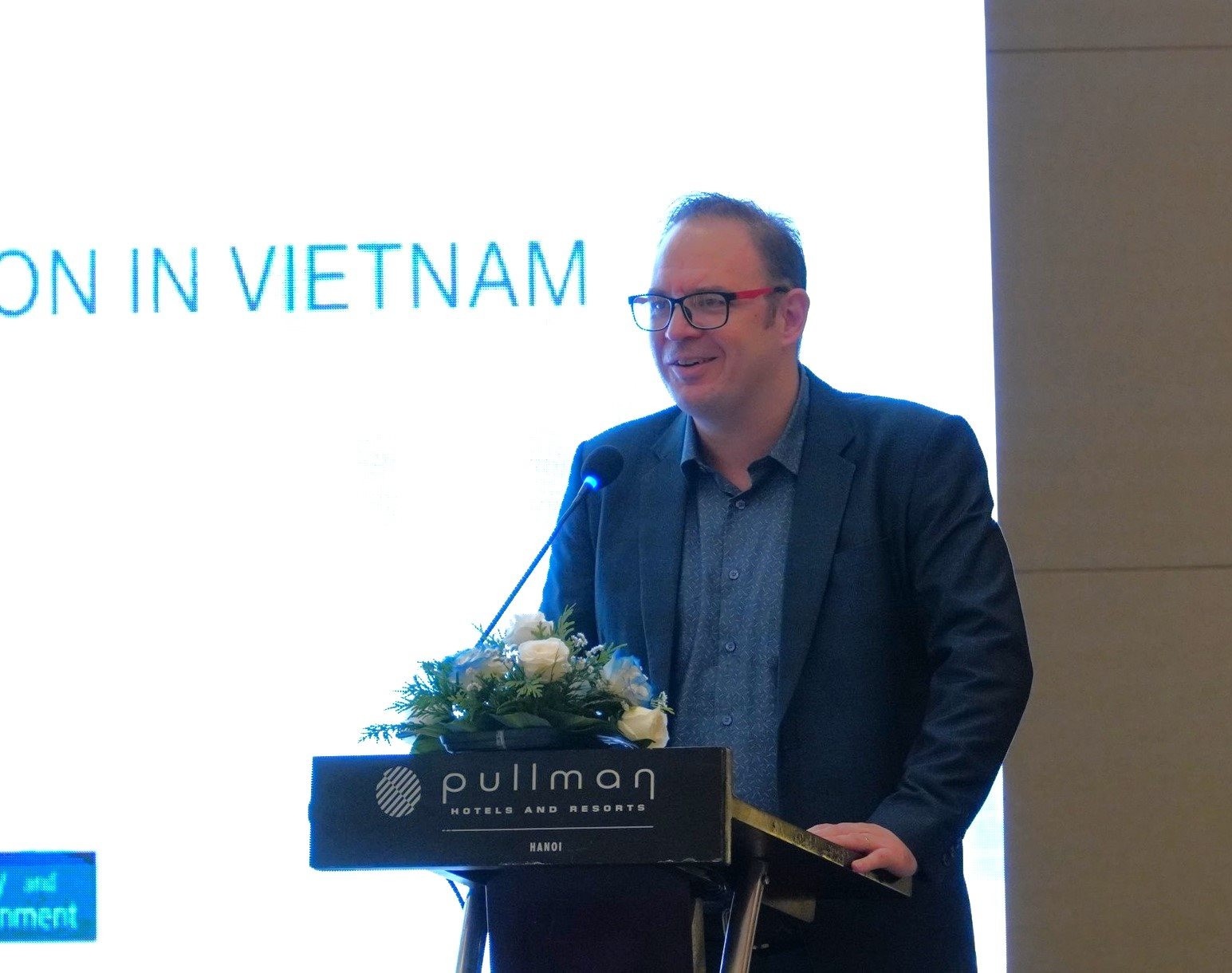 |
John Cotton
Senior programme manager
Southeast Asia Energy Transition Partnership
Enterprises in the food processing industry and supporting industries are facing many difficulties in applying energy-saving solutions due to a lack of information about energy efficiency, sustainability, and green production. Meanwhile, manufacturers tend to ignore energy-efficient solutions due to a lack of financial, technical, and energy auditing capacity. They also fail to develop projects to access appropriate investment and financial sources.
We launched a project on promoting energy efficiency in the supporting and food processing industries in Vietnam in August, with the goal of raising awareness and helping businesses access financial resources for investments in the economical and efficient use of energy.
The project will also help use resources more efficiently, promote responsible supply chains, and improve social and environmental conditions.
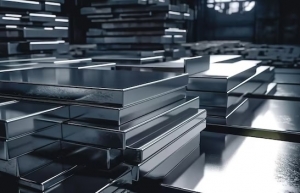 | CBAM warrants steel exporter reaction Steel exporters will need a robust response following the European Union’s new carbon border tax, which will be valid from October. |
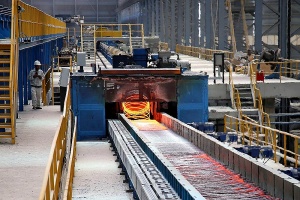 | CBAM may hinder EVFTA advantages for steel industry As the EU's Carbon Border Adjustment Mechanism (CBAM) takes effect on October 1, 2023, steel manufacturers are still confused about how to meet the new requirements. |
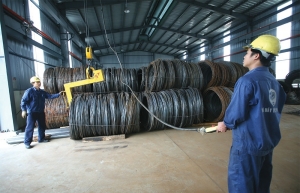 | Steelmakers must act now in CBAM entry The introduction of the EU’s carbon border policy will be particularly crucial for Vietnamese steel companies, as they are among the top emitters of greenhouse gases domestically. |
What the stars mean:
★ Poor ★ ★ Promising ★★★ Good ★★★★ Very good ★★★★★ Exceptional
 Tag:
Tag:
Related Contents
Latest News
More News
- Three key dynamics supporting Vietnam’s GDP growth in 2026 (January 20, 2026 | 16:34)
- Party Congress building momentum for a new era of national growth (January 20, 2026 | 15:00)
- 14th National Party Congress opens preparatory session in Hanoi (January 19, 2026 | 17:42)
- 14th National Party Congress expected to shape Vietnam’s path to 2045 (January 17, 2026 | 16:00)
- CVFA chief highlights role of 14th National Party Congress (January 17, 2026 | 15:54)
- Tablets to replace paper at 14th Party Congress (January 16, 2026 | 21:27)
- Hanoi to display firework to celebrate the 14th National Party Congress (January 16, 2026 | 21:21)
- Vietnam, UN strengthen cooperation in digital technology, AI (January 16, 2026 | 16:48)
- VN-Index could reach 2,040 points in 2026 (January 16, 2026 | 16:41)
- Consumer deals drive Vietnam’s M&A rebound in December (January 16, 2026 | 16:08)























 Mobile Version
Mobile Version